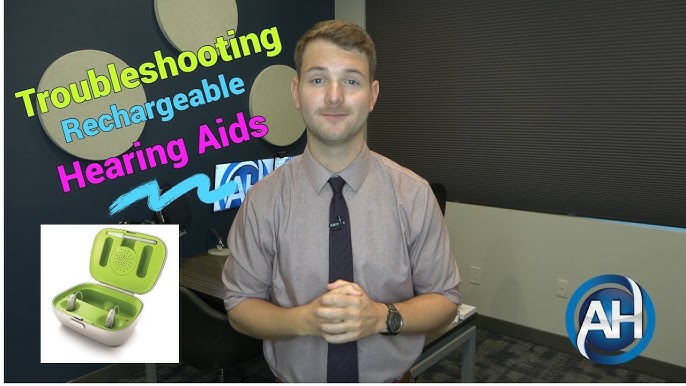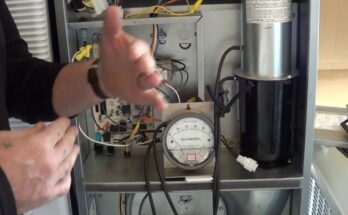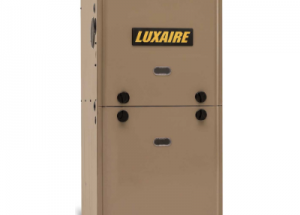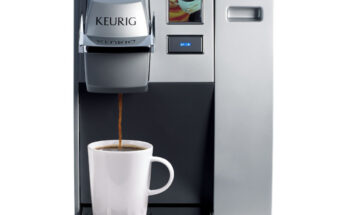For Kirkland hearing aid troubleshooting, check battery life and ensure the device is clean. Also, verify proper settings and fit.
Kirkland hearing aids are popular due to their affordability and quality. Despite their reliability, users may encounter issues. Common problems include battery depletion, wax buildup, and incorrect settings. Simple troubleshooting steps often resolve these concerns quickly. Regular maintenance is essential for optimal performance.
Users should clean the device regularly and check for any visible damage. Adjusting settings to match the hearing environment can also help. For persistent issues, consulting a professional is advisable. Proper care ensures longevity and better hearing experiences.

Credit: vivtone.com
Common Issues
Experiencing problems with your Kirkland hearing aid can be frustrating. Knowing common issues helps troubleshoot effectively. Below are the most frequent problems users encounter.
No Sound
One common issue is hearing no sound. Check if the hearing aid is turned on. Ensure the battery is properly inserted and has charge. Clean the microphone and receiver openings. Wax or debris can block sound.
If the problem persists, try replacing the battery with a new one. Make sure the hearing aid is not in mute mode. Refer to the user manual for specific instructions.
Distorted Audio
Distorted audio is another common complaint. Ensure the battery is fully charged. Low battery can cause sound distortion. Clean the device to remove any wax buildup.
Check the volume settings. Too high volume can distort sound. Adjust to a comfortable level. If the issue continues, consult a professional for further assistance.
Feedback And Whistling
Feedback and whistling sounds are often due to improper fit. Make sure the hearing aid is seated correctly in your ear. Clean the device to remove any wax or debris.
Feedback can also occur if the volume is too high. Lower the volume and see if the whistling stops. If these steps don’t help, seek professional advice.

Credit: phctennessee.com
Battery Problems
Experiencing battery problems with your Kirkland hearing aid can be frustrating. Batteries power your hearing aid, and issues can disrupt your daily life. Below, we will discuss common battery problems and how to troubleshoot them.
Battery Life
Battery life can vary based on usage and settings. Typically, hearing aid batteries last from 3 to 10 days. If your battery drains quickly, consider these factors:
- Usage: More usage leads to faster battery drain.
- Volume: Higher volumes use more power.
- Bluetooth: Constant Bluetooth connections drain batteries quickly.
Use a battery tester to check the battery’s charge level. Replace weak batteries promptly.
Proper Insertion
Ensure the battery is inserted correctly. Improper insertion can prevent the hearing aid from working. Follow these steps:
- Open the battery compartment carefully.
- Remove the old battery.
- Insert the new battery with the positive (+) side facing up.
- Close the compartment securely.
Always use the correct battery size for your hearing aid. Refer to your user manual for specifics.
Battery Compartment
The battery compartment must be clean and free of debris. Dirt and moisture can affect the battery’s performance. To clean it:
- Use a soft, dry cloth to wipe the compartment.
- Avoid using water or cleaning agents.
- Check for corrosion or dirt buildup.
If the compartment is damaged, consult a professional for repairs. A damaged compartment can lead to battery issues and malfunctioning of the hearing aid.
| Problem | Solution |
|---|---|
| Battery drains quickly | Reduce usage, lower volume, limit Bluetooth use |
| Hearing aid not working | Check battery insertion and replace if necessary |
| Corroded battery compartment | Clean with a dry cloth, seek professional help if needed |
Cleaning And Maintenance
Proper cleaning and maintenance of your Kirkland hearing aids can greatly extend their lifespan. Regular care ensures that they function effectively and provide the best possible sound quality. Follow these steps for daily cleaning, managing wax buildup, and moisture control.
Daily Cleaning
Daily cleaning of your Kirkland hearing aids is crucial. This prevents debris and other particles from clogging the device.
- Use a soft, dry cloth to wipe the hearing aids.
- Avoid using water, alcohol, or cleaning solvents.
- Gently brush the microphone and speaker ports with a soft brush.
Regular cleaning keeps your hearing aids in optimal condition.
Wax Buildup
Wax buildup can affect the performance of your hearing aids. It’s essential to clean the earwax regularly.
- Inspect the earmold and receiver for wax deposits.
- Use the provided wax removal tool to clean the device.
- Replace wax guards as needed.
Keeping the wax under control ensures clear sound transmission.
Moisture Control
Moisture is a common enemy of hearing aids. Controlling it can prevent damage.
- Store hearing aids in a dry, cool place when not in use.
- Use a hearing aid dehumidifier overnight.
- Avoid exposing the devices to water or high humidity.
Effective moisture control maintains the longevity of your hearing aids.
Connectivity Issues
Experiencing connectivity issues with your Kirkland hearing aid can be frustrating. Understanding the common problems can help you troubleshoot effectively. Below are some common connectivity issues and their solutions.
Pairing With Devices
Pairing your Kirkland hearing aid with devices is essential for seamless use. Make sure your hearing aid is in pairing mode.
- Turn on the Bluetooth on your device.
- Search for available devices.
- Select your Kirkland hearing aid from the list.
If the pairing fails, restart both your hearing aid and the device. Ensure they are within a close range.
Bluetooth Problems
Bluetooth issues can disrupt your experience. Check if Bluetooth is enabled on your device.
- Restart your hearing aid.
- Remove and re-pair the device.
- Ensure software is up to date.
If problems persist, reset the network settings on your device. This can often resolve hidden issues.
Signal Interference
Signal interference can impact connectivity. Keep your hearing aid away from other electronic devices.
| Interference Source | Solution |
|---|---|
| Microwaves | Avoid using near microwaves |
| Wi-Fi Routers | Maintain a distance |
| Wireless Phones | Turn off or move away |
Move away from potential sources of interference. If the issue persists, try using the hearing aid in a different location.
Fit And Comfort
Ensuring the fit and comfort of your Kirkland hearing aids is crucial. A proper fit enhances sound quality and comfort. Poorly fitting aids can cause discomfort and reduce effectiveness.
Ear Molds
Ear molds are essential for a comfortable fit. They come in different sizes and shapes to suit different ears.
- Choose the correct size for your ear canal.
- Ensure the mold is inserted properly.
- Check for any gaps between the ear and the mold.
A well-fitting ear mold prevents feedback and improves sound quality.
Adjustment Tips
Adjusting your hearing aid correctly can enhance comfort. Here are some tips:
- Start with the lowest volume setting.
- Gradually increase the volume until it feels right.
- Use the balance control to adjust the sound.
Small adjustments can make a big difference in comfort.
Ear Irritation
Sometimes, hearing aids can cause ear irritation. This can be due to several reasons:
| Cause | Solution |
|---|---|
| Incorrect size | Use the right ear mold size |
| Improper insertion | Ensure proper insertion |
| Allergic reaction | Consult an audiologist |
If irritation persists, seek professional advice.
Software Updates
Keeping your Kirkland hearing aid up-to-date is crucial. Software updates bring new features and fix bugs. Learn how to handle these updates efficiently.
Firmware Updates
Firmware updates are essential for your hearing aid. They improve performance and fix issues. To update the firmware, follow these steps:
- Open the Kirkland hearing aid app.
- Navigate to the settings menu.
- Select “Firmware Update”.
- Follow the on-screen instructions.
Always ensure your hearing aid has the latest firmware. This keeps it running smoothly.
App Compatibility
The Kirkland hearing aid app must be compatible with your device. Check the app store for the latest version. Ensure your phone’s OS is up-to-date.
| Device | OS Version |
|---|---|
| iPhone | iOS 12 or later |
| Android | Android 6.0 or later |
Compatibility ensures the app functions correctly. This allows you to control your hearing aid easily.
Troubleshooting Software
If you face issues, try troubleshooting the software. Here are some common steps:
- Restart the hearing aid.
- Reinstall the Kirkland app.
- Check for app updates.
- Ensure Bluetooth is on.
These steps resolve most software issues. If problems persist, contact Kirkland support.
Environmental Factors
Understanding the impact of environmental factors on your Kirkland hearing aids is crucial. These factors can affect performance and longevity. Below, we explore three key environmental factors: temperature extremes, humidity levels, and exposure to elements.
Temperature Extremes
Extreme temperatures can damage your hearing aids. Avoid leaving them in hot cars or direct sunlight. Heat can melt internal components. Cold temperatures can cause battery issues. Always store your hearing aids in a stable environment.
Humidity Levels
High humidity can introduce moisture into your hearing aids. Moisture can lead to malfunctions and poor performance. Use a dehumidifier designed for hearing aids. This keeps them dry and functional.
Exposure To Elements
Exposure to elements like dust and rain can harm your hearing aids. Always use protective covers when outdoors. Avoid wearing them in heavy rain or dusty areas. Regular cleaning can also help maintain their performance.
When To Seek Professional Help
Kirkland hearing aids are reliable. Yet, sometimes issues arise. Knowing when to seek professional help is crucial. Here are key situations where you should consult a specialist.
Persistent Issues
If your hearing aid shows persistent issues, professional help is needed. Common persistent problems include:
- Constant static or buzzing sounds
- Intermittent power loss
- Unresponsive volume controls
These problems might indicate deeper issues. An expert can diagnose and fix them.
Professional Cleaning
Hearing aids require regular maintenance. Professional cleaning ensures optimal performance. Signs you need a professional cleaning include:
- Wax build-up
- Reduced sound quality
- Visible dirt or debris
A professional cleaning can prolong the life of your device.
Device Replacement
Sometimes a device replacement is necessary. Consider a replacement if you experience:
- Outdated technology
- Frequent repairs
- Significant physical damage
A new device can improve your hearing experience significantly.
| Issue | Action |
|---|---|
| Persistent static | Seek professional help |
| Wax build-up | Professional cleaning |
| Frequent repairs | Device replacement |

Credit: m.youtube.com
Frequently Asked Questions
How Do I Reset My Kirkland Hearing Aid?
To reset your Kirkland hearing aid, open the battery door. Wait 10 seconds, then close the door. This restarts the device.
Why Did Costco Stop Selling Kirkland Hearing Aid?
Costco stopped selling Kirkland hearing aids to upgrade the product line. New models with advanced features are coming soon.
Why Is My Hearing Aid Connected But No Sound?
Your hearing aid might be muted, the battery could be low, or the volume might need adjustment. Check for blockages or debris. Ensure the device is properly paired and updated. If issues persist, consult with your audiologist.
What Are Three Ways In Which A Hearing Aid Can Malfunction?
A hearing aid can malfunction due to battery issues, earwax blockage, or moisture damage.
Conclusion
Effective troubleshooting of Kirkland hearing aids ensures optimal performance. Follow these tips to resolve common issues quickly. Regular maintenance is crucial for longevity. Consult professionals if problems persist. Enjoy improved hearing and a better quality of life with properly functioning hearing aids.
Keep your devices in top condition with these simple steps.



